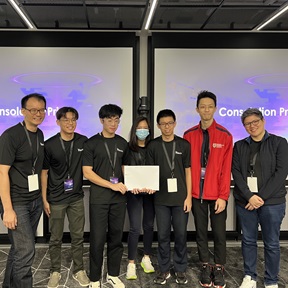NTU EEE Professor Lee Seok Woo co-leads team that develops biodegradable printed paper batteries
NTU EEE Professor Lee Seok Woo co-leads team that develops biodegradable printed paper batteries.
The EEE Professor co-leads the teams with Professor Fan Hongjin from the NTU School of Physical and Mathematical Sciences. Once expended, eco-friendly batteries break down in soil within weeks Scientists from Nanyang Technological University, Singapore (NTU Singapore) have developed paper-thin biodegradable zinc batteries that could one day become an environmentally sustainable option for powering flexible and wearable electronic systems.
The NTU Singapore-developed zinc batteries are made up of electrodes (through which the electrical current leaves or enters the battery) screen-printed on to both sides of a piece of cellulose paper that has been reinforced with hydrogel. Once the battery has been expended, it can be buried in soil, where it breaks down completely within a month.
In their demonstrations, the NTU scientists were able to power a small electric fan for at least 45 minutes with a 4cm by 4cm square of printed paper battery. Separately, the 4cm by 4cm square of printed paper battery was also able to power an LED. The scientists found that bending, twisting, or cutting parts of the printed paper battery did not disrupt its power supply.
This means that the printed paper battery could potentially be integrated into flexible electronics such as foldable smart phones that are already on the market, or biomedical sensors for health monitoring. The paper printed battery is also thinner and lighter than a conventional battery, which means that it could be used to power flexible and wearable electronic systems.
Assistant Professor Lee Seok said: “We believe the paper battery we have developed could potentially help with the electronic waste problem, given that our printed paper battery is non-toxic and does not require aluminium or plastic casings to encapsulate the battery components. Avoiding the packaging layers also enables our battery to store a higher amount of energy, and thus power, within a smaller system.”
Currently the research is seeking further funding to proceed to the next stage and there is possibility of NTU students being part of this exciting research for their Final Year Projects (FYP) or Undergraduate Research on Campus (URECA).



.tmb-listing.jpeg?Culture=en&sfvrsn=f86625c4_1)


